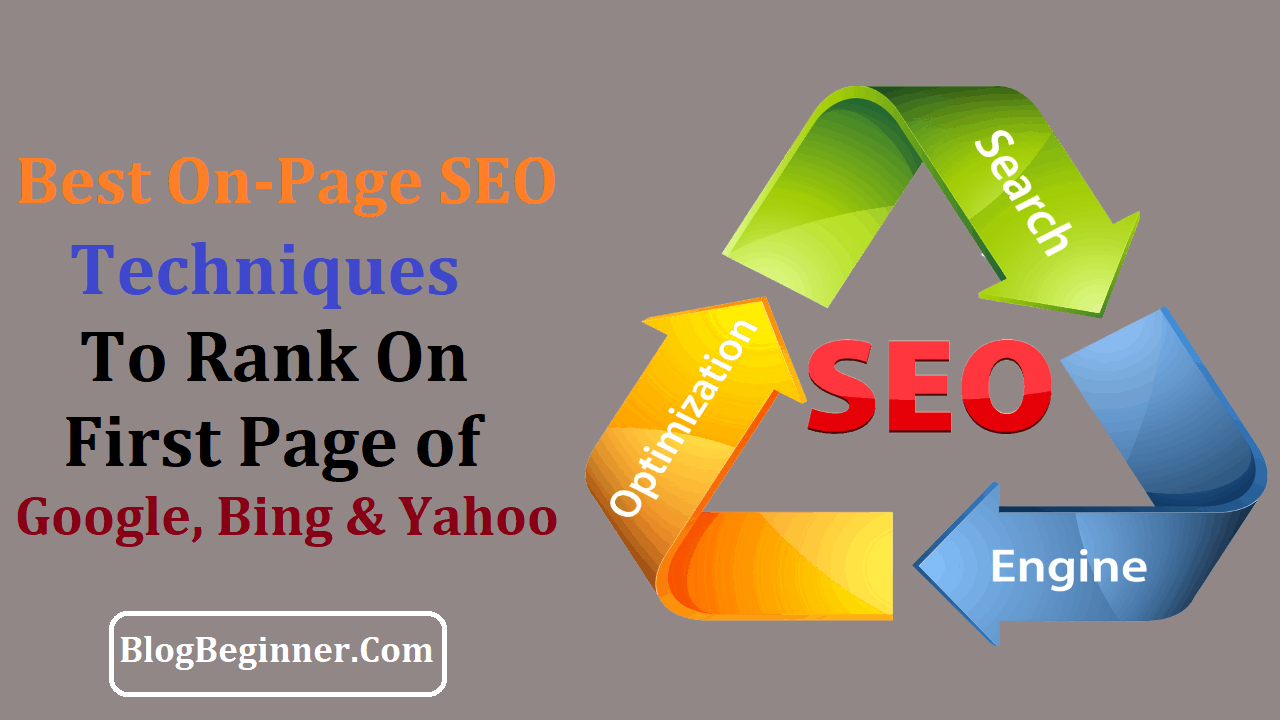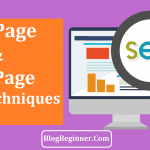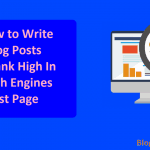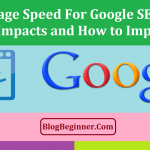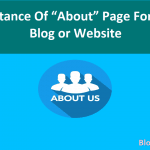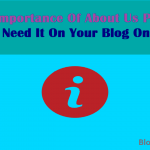Before anything else, we need to provide a clear definition of on-page SEO.
In the simplest of terms, on-page SEO refers to all the actions taken directly within a website with the main goal of improving its position in the search rankings.
In short, these are actions that can only be employed by someone who has access and control over the website.
Unlike off-page SEO which can be outsourced to people who don’t have management control over the website.
On-page SEO is one of the most important aspects of site optimization.
It’s so important that some webmasters often focus most of their efforts and resources on on-page SEO.
If you want to take your on-page SEO to the next level, here are some of the most practical techniques you should be implementing:
Contents In Page
1. Make User Experience Your Top Priority:
At the end of the day, what matters the most is how satisfied people are in using your website.
Put yourself in the shoes of your visitors.
What would you like to see in your website?
How can you improve your experience in using the site?
Know that the bounce rate of your website is taken into account by search engines when deciding how you should rank in the search results.
Bounce rate refers to the percentage of visitors who quickly navigate away from a website after viewing only a single page.
If users have a bad experience when visiting your website, they navigate away.
That bloats your bounce rate and this isn’t good for your search rankings.
To improve user experience, you should make your website as responsive as possible.
It should be able to respond and adapt depending on the device or technology that the visitor is using in viewing the site.
A perfect example of a responsive website is one that adapts when a person views it on a mobile phone.
This is why it’s very important that you create a mobile version of your website.
Another way of improving user experience is to make sure that all links in your website are working.
It can be very frustrating for a visitor if he clicks on a link and he gets redirected to a dead page.
2. Use Meta Titles and Descriptions Properly:
Here’s what you need to know about search engines and how they index your website.
When search engines are crawling through your website, the first things they read are your titles, tags, and descriptions.
They then check the headings and the content itself.
The idea here is that your titles, descriptions, and tags should match your content.
This is very important because a lot of webmasters often attempt to game the algorithm by using titles and descriptions that are irrelevant to the content.
Don’t ever do this blackhat technique because it can get your site penalized or banned if caught.
If you are using a lot of images and videos, you should also see to it that they contain titles, tags, and descriptions that match your content.
This is necessary especially for the fact that search engines can’t read images and videos.
You have to provide clues to help them understand what your images and videos contain.
The only way to do this is to make use of relevant tags and descriptions.
3. Keywords:
Use keywords in creating your content but you should keep a close watch over your keyword density.
Keywords are the lifeblood of your website as far as SEO is concerned.
If you know how to use keywords and integrate them well into your content and site structure, there’s no reason why you can’t rank your website in the search results.
Whether you are writing titles or the content itself, you should never lose sight of your keywords.
Use them whenever necessary.
However, you should also be reminded but there’s this thing called keyword stuffing.
This is the practice of using too many keywords in your content.
Some webmasters are not even aware that they are doing it because they are too focused on using the keywords.
But you should know that keyword stuffing is considered bad by search engines.
If you are caught stuffing keywords in your content, you will be likely penalized.
To avoid this, you need to watch over your site’s keyword density.
Keyword density refers to the measurement in percentage of the number of instances that a particular keyword or phrase was used in a page.
Most optimization experts suggest that you should keep your keyword density at 1.5% to avoid stuffing problems.
There are tools and apps that you can use to measure keyword density in a particular page.
You should take advantage of these tools.
4. Content Length:
Make sure that the content you publish have sizable word counts.
This is very important especially if you are running a blog or an article-heavy website.
An article that contains 1000 words has better chances of ranking highly compared to an article that has 500 words.
The point here is that you should focus on creating longer content for SEO reasons.
Posts that don’t have a lot of words don’t perform well in the search rankings because they are usually considered as less informative.
Now you might be asking how many words should a post contain to be considered as informative.
There’s no specific word count but most online marketers would agree that it’s best if the word count is above 1000 words.
Going for a longer word count means you are offering more content to the reader.
Longer content also helps in reducing your website’s bounce rate.
In the long run, this gives cues to the search engines that your website is helpful and informative because visitors are spending more time reading its contents.
5. Internal and External Linking Strategy:
Come up with an internal linking and external linking strategy.
Internal linking is the practice of linking to other pages that are within your website.
For example, let’s say you wrote a post about Facebook marketing and it happens that there’s a post you’ve written in the post about optimizing a Facebook business page.
It would make complete sense for you to link to that previous article.
You should only do internal linking if the two pages in question are relevant to each other.
Don’t just create internal links for the sake of linking together your content.
You can actually get penalized for it.
The same can be said about external linking.
When writing a post, there are instances wherein it’s necessary to link to content that’s outside of your website.
It’s important that you link to websites that are of similar themes and content to your own website.
For example, if you are running a blog about acrylic painting, it makes sense if you link to other websites that also talk about acrylic painting.
It’s a way of leading your readers to additional resources. In a nutshell, external linking improves the user experience.
External linking also helps in getting more targeted traffic towards your website.
Most webmasters track the sites that are linking to their sites.
If a website owner finds out that you linked to his website, that webmaster will check out your website and might link back to return the favor.
If this happens, you will be receiving qualified traffic from a relevant website.
6. Optimize Your URLs:
This is something that a lot of webmasters often take for granted.
A descriptive URL can do wonders in making sure that the page ranks higher in the search results.
The general rule here is that the URL should contain relevant keywords and not just random words or nonsensical numbers.
For example, take a look at the following two URLs:
https://www.blogbeginner.com/p?5766blog-post-topics-12
https://www.blogbeginner.com/how-to-start-a-blog/
Look at the two URLs.
Which URL do you think has better chances of ranking highly in the search results of Google?
Of course, it’s the second one because it has a clearer and more descriptive URL.
It’s a much better URL than the first one.
It’s also worth noting here that descriptive URLs tend to get more clicks from readers because the URL provides potential visitors with an idea as to the contents of the page.
In our first URL example, it’s very difficult for the reader to understand what the page may be about.
In the second example, the reader can easily recognize that the page contains a post about online marketing techniques.
7. Improve Your Website’s Loading Speed:
Doesn’t it frustrate you when you visit a website and it takes a millenia for the page to load?
If your site loads too slow, your rankings in the search results will be directly affected.
The slow loading time will also increase your site’s bounce rate because people will usually navigate away if it takes too long for the page to load.
To improve your site’s loading page, there are a few things you can do.
- One, use a reliable website host.
- Two, get rid of unnecessary apps and widgets in your website.
- Three, make use of content management systems that are friendly to search engine spiders.
- And four, don’t saturate your website with content that takes a lot of time to load like heavy images and videos.
Conclusion:
All these techniques are easy to implement so there’s absolutely no reason why you shouldn’t follow them.
Of course, it will be a bit difficult at first especially if you are new to SEO but it gets easier as time goes by.
What you should always understand is that on-page SEO plays a critical role in helping your website rank higher in the search results.
